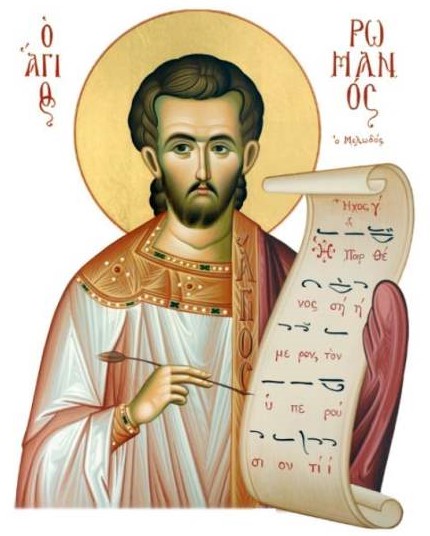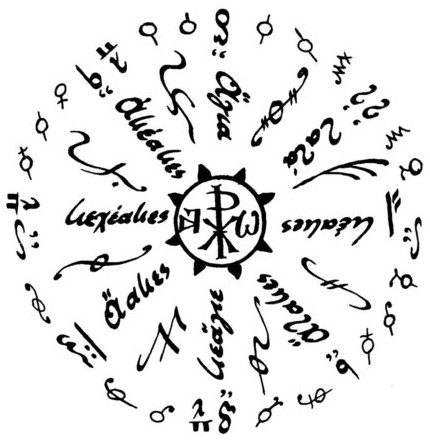
 |
SYNAXIS.INFO • Orthodox Christian Worship ResourcesEducational Materials for Clergy, Readers, Ecclesiarchs, Chanters, Choir Directors |

LINKS: Resources for Readers, Liturgists, Clergy and Spiritual Fathers
Introduction to the Byzantine Tonal System
What is the Orthodox hymnographic tradition of the 8 Tones?
BYZANTINE SCALES - Diatonic - Soft Chromatic - Hard Chromatic - Enharmonic
Byzantine Chant Lessons (Antiochian Village Camp)
These helpful lessons provide instructions for singing the Eight Tones in a simple improvisatory style.Learn the Tones (Michael Azar)
These links are by no means comprehensive, but are a good sampling of what is available online. In many cases, if you click on the name of the person posting a YouTube video that you enjoy, you can follow the link to a complete listing of all their videos which they have posted on YouTube.
Understanding Byzantine Chant - Class 1
Understanding Byzantine Chant - Class 2
Understanding Byzantine Chant - Class 3
Understanding Byzantine Chant - Class 4Orthodox Christian Fellowship
Learning about Orthodox Christian Byzantine Chant: Intro Part 1
Learning about Orthodox Christian Byzantine Chant: Introduction Part 2
Orthodox Christian Byzantine Chant: What is Byzantine Notation?
There are several other videos of interest, but OCF has not organized their videos into playlists or categories, so you will just have to search through their videos (and follow recommended videos in the right column of YouTube).Introduction to the Byzantine Tonal System
Michael Azar Music
Michael offers a number of excellent instructional videos, most of which are for the intermediate student. As a starter, I recommend the following:
How to sing Ison (part 1)
How to sing Ison (part 2)
When to Change Ison when singing, and how to sing ison longerNicholas J. Jones
He offers a number of lengthy series of in-depth classes for learning Byzantine Chant notation and principles of singing, ranging from to beginning to intermediate to advanced.
As a starter, Nicholas presents an excellent set of 3 beginning lessons:Byzantine Chant: The Received Tradition
Trisagion School of Byzantine Music
Patriarchal Psaltophiles - web site
Partriarchal Psaltophiles (YouTube, very advanced lessons)
Introduction to Patriarchal Psaltophiles. Learn byzantine music chant series.Byzantine Music Formulae (St, Anthony's Monastery): https://stanthonysmonastery.org/pages/byzantine-music-formulae
The Genres of Orthodox Hymnography
Traditional Chant Repertoires
Byzantine Chant and its Notation
Znamenny Chant and its Notation
Modern Russian Church Singing
Idiómela, Autómela and Prosómoia (Samoglásny, Samopodóbny and Podóbny)
How Automela Make a Chanter’s Life Easier
Automela in all Modes: Bilingual Edition (book to order from Holy Cross Bookstore)
Prosomias: http://stcaedmonschant.org/prosomia.html
Intro to Vespers - Coffee with Sr. Vassa
O, Lord I Have Cried
Tone 1: https://youtu.be/h-MSLN5bXyU
Tone 2: https://youtu.be/AMsGwjivChk
Tone 3: https://youtu.be/VNj74znDbug
Tone 4: https://youtu.be/3hbMCyYxPRI
Plagal of Tone 1 (Tone 5): https://youtu.be/zTyJsuOpNi8
Plagal of Tone 2 (Tone 6): https://youtu.be/dFFAseEf4m8
Grave Tone (Varys, Tone 7): https://youtu.be/WCPDn7YKaZg
Plagal of Tone 4 (Tone 8): https://youtu.be/3i3PZ21p7Js
O Gladsome Light: https://www.youtube.com/watch?v=618jSKxAdzg
Hymn of Saint-Symeon (Lord Now Lettest Thou Thy Servant Depart in Peace...): https://youtu.be/A1HP6-z9rWg
(For the Apolytikia and their Theokoia, see Orthros below.)
Learn to Chant Orthros, Tone 1: https://www.goarch.org/-/learn-to-chant-sunday-orthros-mode-1
Learn to Chant Orthros, Tone 2: https://www.goarch.org/-/learn-to-chant-sunday-orthros-mode-2
Learn to Chant Orthros, Tone 3: https://www.goarch.org/-/learn-to-chant-sunday-orthros-mode-3
Learn to Chant Orthros, Tone 4: https://www.goarch.org/-/learn-to-chant-sunday-orthros-mode-4
Learn to Chant Orthros, Tone 5 (Plagal 1): https://www.goarch.org/-/learn-to-chant-sunday-orthros-mode-plagal-of-the-1st
Learn to Chant Orthros, Tone 6 (Plagal 2): https://www.goarch.org/-/learn-to-chant-sunday-orthros-mode-plagal-of-the-2nd
Learn to Chant Orthros, Tone 7 (Grave): https://www.goarch.org/-/learn-to-chant-sunday-orthros-grave-mode
Learn to Chant Orthros, Tone 8 (Plagal 4): https://www.goarch.org/-/learn-to-chant-sunday-orthros-mode-plagal-of-the-4th
[DISCLAIMER: The Greek Archdiocese prefers to use modern "You-Who" English, while the Antiochian Archdiocese prefers to use Elizabethan or "Liturgical" English.]
Intro to Divine Liturgy (Video-Course) - Coffee with Sr. Vassa
Rising from the East
NOTE: These folks sing the Liturgy very nicely, and their sound quality is enhanced by having an all-male ensemble. I would certainly suggest that this is a style of chanting that we should strive for in our humble parish. However, there are moments in some of the tracks where they break into an obvious western-style harmonization of Byzantine Chant (heard in several tracks, such as in the Anaphora), and I recommend that we avoid such "theatrics" if we are diligent in singing a more traditional style of Byzantine Chant which uses a single ison.
The Arabic Divine Liturgy of St. John Chrysostomos
The English Divine Liturgy of St. John Chrysostomos
The Divine Liturgy of Saint John Chrysostom in English (Holy Transfiguration Monastery)
Selected Hymns of the Divine Liturgy (Holy Nativity Convent)
The Divine Liturgy of St. John Chrysostom (St. John the Baptist Monastery Choir - Bulgarian)
NOTE: In the playlists above, you may notice that the Typical Psalms and Beatitudes are soemtimes called "Antiphons". While they are sung antiphonally, technically these are not Antiphons. (This is a common mis-use, which the Russians do as well.) The first psalm is appointed to be sung in Plagal of 4th, and the second psalm is appointed to be sung in the Grave Tone. The Beatitudes for almost all days (when appointed) are to be sung in the Tone of the week, but there are a few occasions (such as middle-rank feasts during the week) when they are sung according to the Tone of the Canon of the saint at Orthros, as we are supposed to sing troparia of the canon between the verses of the Beatitudes. It can be confusing for beginning liturgists, but once you get used to the practice, it's really just a matter of following the instructions in the full version of the Typicon, where there are rubrics for all days of the year. (And when such rubrics are "abbreviated", it means that we must locate another saint of the same type and rank -- such as a service for holy women martyrs of Great Doxology rank -- and apply the same rubrics.)
Part of acquiring a feeling for traditional Byzantine Chant is listening to a large repertoire of music that can help us to pick up familiar melodies, patterns, scales, and the overall ethos of the Byzantine Chant system. I recommend listening to the following selections to play in the background when you are driving, doing housework, cooking , etc. While these pieces are not part of our service repertoire (being mostly Psalms set to beautiful Byzantine melodies), they are wonderful to listen to and will help us acquire a familiarity with many common melodic motifs.
Byzantine Music - Psalms and Hymns
The Choir of Eparchy of Tripoli - Topic
Psalms
In addition to learning about music, it is strongly recommended that the beginning chanter learn more about the services themselves, as well as acquiring a proper Orthodox understanding of how we should be living our lives - an Orthodox "frame of mind" or "mindset" (Greek: phrónema).
Church School - 24 lessons
St. John Orthodox Church MemphisThe Ministry of Church Singers
His Grace, Bishop JOSEPH's Choir Appreciation Message
A History of Music in the Antiochian Archdiocese
History of the Byzantine Chant in English
lecture by Charlie Marge